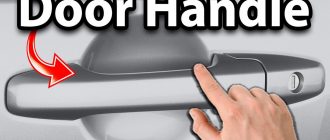How to Measure Car Body Paint Thickness
Why is it Important to Measure Car Body Paint Thickness?
The thickness of your car’s body paint is an important factor in determining its overall appearance and value. A thin paint job can be more easily damaged by scratches and chips, while a thick paint job can help to protect the underlying metal from corrosion.
There are a few different ways to measure car body paint thickness, but the most accurate method is to use a paint thickness gauge.
How to Choose a Paint Thickness Gauge
There are a few different types of paint thickness gauges available on the market, so it is important to choose one that is right for your needs.
Here are a few things to consider when choosing a paint thickness gauge:
- Type of gauge: There are two main types of paint thickness gauges: destructive and non-destructive. Destructive gauges require you to remove a small amount of paint from the surface of the car in order to measure the thickness. Non-destructive gauges do not require you to remove any paint, so they are a better choice for measuring the thickness of original paint jobs.
- Accuracy: The accuracy of a paint thickness gauge is measured in microns. The higher the accuracy, the more precise the measurements will be. A gauge with an accuracy of +/-5 microns is typically sufficient for most purposes.
- Range: The range of a paint thickness gauge is the thickness of paint that it can measure. Most gauges have a range of 0-1000 microns.
- Price: Paint thickness gauges range in price from $50 to $500. The price of a gauge will typically depend on its accuracy, range, and features.
How to Use a Paint Thickness Gauge
Once you have chosen a paint thickness gauge, you can follow these steps to measure the thickness of your car’s body paint:
- Clean the surface of the car: Before you measure the paint thickness, it is important to clean the surface of the car to remove any dirt or debris.
- Calibrate the gauge: Most paint thickness gauges need to be calibrated before they can be used. To calibrate the gauge, place it on a piece of metal with a known thickness. The gauge should display the correct thickness of the metal.
- Measure the paint thickness: Place the gauge on the surface of the car and press the button to measure the paint thickness. The gauge will display the thickness of the paint in microns.
What is the Normal Thickness of Car Body Paint?
The normal thickness of car body paint is between 100 and 150 microns. However, the thickness of the paint can vary depending on the make and model of the car, as well as the year it was manufactured.
If you are unsure about the normal thickness of the paint on your car, you can consult with a professional auto body shop.
Troubleshooting Paint Thickness Measurements
If you are having trouble getting accurate paint thickness measurements, there are a few things you can try:
- Make sure the gauge is calibrated properly: If the gauge is not calibrated properly, it will not give you accurate measurements.
- Clean the surface of the car: Dirt and debris can interfere with the gauge’s ability to measure the paint thickness.
- Try measuring in a different location: If you are getting inconsistent measurements, try measuring in a different location on the car.
- Contact the manufacturer of the gauge: If you are still having trouble getting accurate measurements, contact the manufacturer of the gauge for assistance.
Conclusion
Measuring the thickness of your car’s body paint is a simple and inexpensive way to help protect its appearance and value. By following the steps outlined in this guide, you can ensure that your car’s paint job is up to par.




